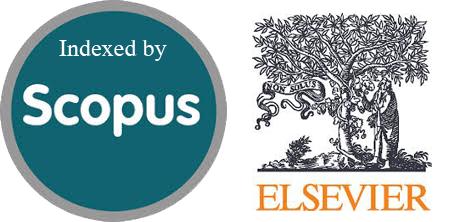Wound Healing Effects of Zofenopril and Fisetin in Rat Model of Diabetic Foot Ulcers
DOI:
https://doi.org/10.54133/ajms.v8i2.2047Keywords:
Diabetic foot ulcer, Fisetin, Sulfhydrylated ACE-inhibitors, Wound healing, ZofenoprilAbstract
Background: Diabetic foot ulcer (DFU) is a prevalent complication of diabetes. Current therapeutic options remain inadequate in controlling its progression. Objectives: To evaluate the wound-healing potential of zofenopril (ZOF) and fisetin (FS) in a rat model of DFU. Methods: Sixty-five rats were included in the study and divided into 7 groups: nDnW: non-diabetic, non-wounded; nDW: non-diabetic, wounded; DWC: diabetic, wounded control. Insulin, ZOF, FS, and ZOF+FS. Diabetes was induced using 60mg/kg streptozotocin (STZ), and a full-thickness excision wound was created on the dorsal surface of the hind paw. The wound size was measured by ImitoWound application. Assessment of blood glucose, C-reactive protein (CRP), interleukin-(IL)-10, total antioxidant capacity (TAOC), vascular endothelial growth factor (VEGF), and hydroxyproline was performed. Tissue samples were examined for histological changes. Results: ZOF, FS, and their combination significantly accelerated diabetic wound healing via reducing wound surface area and percentage of wound contraction, improved glycemic control, and mitigated histological alterations. They significantly reduced the serum level of CRP in the inflammatory phase and increased VEGF and hydroxyproline. Histopathological analysis revealed a reduction in inflammatory infiltration at the wound site, marked angiogenesis and fibroblast proliferation on Day 8, and moderate to excellent epidermal thickness with optimal collagen deposition on Day 16 post-wounding. Conclusions: ZOF, FS, and their combination enhanced wound healing by ameliorating inflammation, improving angiogenesis, collagen synthesis, and re-epithelization. The suggested mechanisms are anti-inflammatory, elevation of the level of VEGF and hydroxyproline, and glycemic control, thereby accelerating wound contraction and improving delayed wound healing in diabetes.
Downloads
References
Wallace HA, Basehore BM, Zito PM, (Eds.), Wound Healing Phases. In: StatPearls. StatPearls Publishing; 2024. Accessed August 27, 2024. PMID: 29262065.
Rodrigues M, Kosaric N, Bonham CA, Gurtner GC. Wound healing: A cellular perspective. Physiol Rev. 2019;99(1):665-706. doi: 10.1152/physrev.00067.2017. DOI: https://doi.org/10.1152/physrev.00067.2017
Nosrati H, Aramideh Khouy R, Nosrati A, Khodaei M, Banitalebi-Dehkordi M, Ashrafi-Dehkordi K, et al. Nanocomposite scaffolds for accelerating chronic wound healing by enhancing angiogenesis. J Nanobiotechnology. 2021;19(1):1. doi: 10.1186/s12951-020-00755-7. DOI: https://doi.org/10.1186/s12951-020-00755-7
Johnson KE, Wilgus TA. Vascular endothelial growth factor and angiogenesis in the regulation of cutaneous wound repair. Adv Wound Care. 2014;3(10):647-661. doi: 10.1089/wound.2013.0517. DOI: https://doi.org/10.1089/wound.2013.0517
Wong RSY, Tan T, Pang ASR, Srinivasan DK. The role of cytokines in wound healing: from mechanistic insights to therapeutic applications. Explor Immunol. 2025;5:1003183. doi: 10.37349/ei.2025.1003183. DOI: https://doi.org/10.37349/ei.2025.1003183
Alamshah SM, Hemmati A, Nazari Z. Assessment of hydroxyproline levels in non-ischemic diabetic foot ulcers during recovery. A prospective case-control study. Romanian J Diabetes Nutr Metab Dis. 2015;22(4):361-366. doi: 10.1515/rjdnmd-2015-0042. DOI: https://doi.org/10.1515/rjdnmd-2015-0042
Silva IMS, Assersen KB, Willadsen NN, Jepsen J, Artuc M, Steckelings UM. The role of the renin‐angiotensin system in skin physiology and pathophysiology. Exp Dermatol. 2020;29(9):891-901. doi: 10.1111/exd.14159. DOI: https://doi.org/10.1111/exd.14159
Scholzen TE, Ständer S, Riemann H, Brzoska T, Luger TA. Modulation of cutaneous inflammation by angiotensin-converting enzyme. J Immunol. 2003;170(7):3866-3873. doi: 10.4049/jimmunol.170.7.3866. DOI: https://doi.org/10.4049/jimmunol.170.7.3866
Hedayatyanfard K, Khalili A, Karim H, Nooraei S, Khosravi E, Sadat Haddadi N, et al. Potential use of angiotensin receptor blockers in skin pathologies. Iran J Basic Med Sci. 2023;26(7). doi: 10.22038/ijbms.2023.66563.14606.
Bernasconi R, Nyström A. Balance and circumstance: The renin angiotensin system in wound healing and fibrosis. Cell Signal. 2018;51:34-46. doi: 10.1016/j.cellsig.2018.07.011. DOI: https://doi.org/10.1016/j.cellsig.2018.07.011
Donnelly R. Angiotensin-converting enzyme inhibitors and insulin sensitivity: Metabolic effects in hypertension, diabetes, and heart failure: J Cardiovasc Pharmacol. 1992;20(Supplement 11):S38-S44. doi: 10.1097/00005344-199200111-00007. DOI: https://doi.org/10.1097/00005344-199200111-00007
Yao J, Fan S, Shi X, Gong X, Zhao J, Fan G. Angiotensin-converting enzyme inhibitors versus angiotensin II receptor blockers on insulin sensitivity in hypertensive patients: A meta-analysis of randomized controlled trials. Li Y, ed. PloS One. 2021;16(7):e0253492. doi: 10.1371/journal.pone.0253492. DOI: https://doi.org/10.1371/journal.pone.0253492
Perkins JM, Davis SN. The renin–angiotensin–aldosterone system: a pivotal role in insulin sensitivity and glycemic control. Curr Opin Endocrinol Diabetes Obes. 2008;15(2):147-152. doi: 10.1097/MED.0b013e3282f7026f. DOI: https://doi.org/10.1097/MED.0b013e3282f7026f
Mahmood N, Rashid B, Abdulla S, Marouf B, Hamaamin K, Othman H. Effects of zofenopril and thymoquinone in cyclophosphamide-induced urotoxicity and nephrotoxicity in rats; The value of their anti-Inflammatory and antioxidant properties. J Inflamm Res. 2025;18:3657-3676. doi: 10.2147/JIR.S500375. DOI: https://doi.org/10.2147/JIR.S500375
Mustafa HH, Marouf BH, Muhamad SA, Hama Saeed DA, Ismaeel DO. Topically applied glycerol-based turmeric extract formulation ameliorates diabetic foot ulcer: A case report. Al-Rafidain J Med Sci. 2025;8(1):62-65. doi: 10.54133/ajms.v8i1.1649. DOI: https://doi.org/10.54133/ajms.v8i1.1649
Antika LD, Dewi RM. Pharmacological aspects of fisetin. Asian Pac J Trop Biomed. 2021;11(1):1-9. doi: 10.4103/2221-1691.300726. DOI: https://doi.org/10.4103/2221-1691.300726
Dong W, Jia C, Li J, Zhou Y, Luo Y, Liu J, et al. Fisetin attenuates diabetic nephropathy-induced podocyte injury by inhibiting NLRP3 inflammasome. Front Pharmacol. 2022;13:783706. doi: 10.3389/fphar.2022.783706. DOI: https://doi.org/10.3389/fphar.2022.783706
Lai M, Lan C, Zhong J, Wu L, Lin C. Fisetin prevents angiogenesis in diabetic retinopathy by downregulating VEGF. J Ophthalmol. 2023;2023:7951928. doi: 10.1155/2023/7951928. DOI: https://doi.org/10.1155/2023/7951928
Goodyear MDE, Krleza-Jeric K, Lemmens T. The Declaration of Helsinki. BMJ. 2007;335(7621):624-625. doi: 10.1136/bmj.39339.610000.BE. DOI: https://doi.org/10.1136/bmj.39339.610000.BE
Pengzong Z, Yuanmin L, Xiaoming X, Shang D, Wei X, Zhigang L, et al. Wound healing potential of the standardized extract of Boswellia serrata on experimental diabetic foot ulcer via inhibition of inflammatory, angiogenetic and apoptotic markers. Planta Med. 2019;85(08):657-669. doi: 10.1055/a-0881-3000. DOI: https://doi.org/10.1055/a-0881-3000
Lau TW, Sahota DS, Lau CH, Chan CM, Lam FC, Ho YY, et al. An in vivo investigation on the wound-healing effect of two medicinal herbs using an animal model with foot ulcer. Eur Surg Res. 2008;41(1):15-23. doi: 10.1159/000122834. DOI: https://doi.org/10.1159/000122834
Aarts P, Van Huijstee JC, Ragamin A, Reeves JL, Van Montfrans C, Van Der Zee HH, et al. Validity and reliability of two digital wound measurement tools after surgery in patients with hidradenitis suppurativa. Dermatology. 2023;239(1):99-108. doi: 10.1159/000525844. DOI: https://doi.org/10.1159/000525844
Biagioni RB, Carvalho BV, Manzioni R, Matielo MF, Brochado Neto FC, Sacilotto R. Smartphone application for wound area measurement in clinical practice. J Vasc Surg Cases Innov Tech. 2021;7(2):258-261. doi: 10.1016/j.jvscit.2021.02.008. DOI: https://doi.org/10.1016/j.jvscit.2021.02.008
Altunoluk B, Söylemez H, Bakan V, Ciralik H, Tolun FI. Protective effects of zofenopril on testicular torsion and detorsion injury in rats. Urol J. 2011;8(4):313-319.
Alikatte K, Palle S, Rajendra Kumar J, Pathakala N. Fisetin improved rotenone-induced behavioral deficits, oxidative changes, and mitochondrial dysfunctions in rat model of Parkinson’s disease. J Diet Suppl. 2021;18(1):57-71. doi: 10.1080/19390211.2019.1710646. DOI: https://doi.org/10.1080/19390211.2019.1710646
Cui J, Fan J, Li H, Zhang J, Tong J. Neuroprotective potential of fisetin in an experimental model of spinal cord injury: via modulation of NF-κB/IκBα pathway. Neuroreport. 2021;32(4):296-305. doi: 10.1097/WNR.0000000000001596. DOI: https://doi.org/10.1097/WNR.0000000000001596
Borghi C, Omboni S. Angiotensin-converting enzyme inhibition: Beyond blood pressure control—The role of zofenopril. Adv Ther. 2020;37(10):4068-4085. doi: 10.1007/s12325-020-01455-2. DOI: https://doi.org/10.1007/s12325-020-01455-2
Lupi R, Guerra SD, Bugliani M, Boggi U, Mosca F, Torri S, et al. The direct effects of the angiotensin-converting enzyme inhibitors, zofenoprilat and enalaprilat, on isolated human pancreatic islets. Eur J Endocrinol. 2006;154(2):355-361. doi: 10.1530/eje.1.02086. DOI: https://doi.org/10.1530/eje.1.02086
Shin J, Kim H, Yim HW, Kim JH, Lee S, Kim H. Angiotensin‐converting enzyme inhibitors versus angiotensin receptor blockers: New‐onset diabetes mellitus stratified by statin use. J Clin Pharm Ther. 2022;47(1):97-103. doi: 10.1111/jcpt.13544. DOI: https://doi.org/10.1111/jcpt.13544
Amin GSM, Marouf BH, Namiq HS, Salih JM. Impact of resveratrol and pharmaceutical care on type 2 diabetes mellitus and its neuropathic complication: A randomized placebo controlled clinical trial. J Clin Pharm Ther. 2024;2024(1):7739710. doi: 10.1155/2024/7739710. DOI: https://doi.org/10.1155/2024/7739710
Prasath GS, Pillai SI, Subramanian SP. Fisetin improves glucose homeostasis through the inhibition of gluconeogenic enzymes in hepatic tissues of streptozotocin induced diabetic rats. Eur J Pharmacol. 2014;740:248-254. doi: 10.1016/j.ejphar.2014.06.065. DOI: https://doi.org/10.1016/j.ejphar.2014.06.065
Zafar M, Naeem-ul-Hassan Naqvi S. Effects of STZ-induced diabetes on the relative weights of kidney, liver and pancreas in albino rats: A comparative study. Int J Morphol. 2010;28(1). doi: 10.4067/S0717-95022010000100019. DOI: https://doi.org/10.4067/S0717-95022010000100019
Erdal N, Gürgül S, Demirel C, Yildiz A. The effect of insulin therapy on biomechanical deterioration of bone in streptozotocin (STZ)-induced type 1 diabetes mellitus in rats. Diabetes Res Clin Pract. 2012;97(3):461-467. doi: 10.1016/j.diabres.2012.03.005. DOI: https://doi.org/10.1016/j.diabres.2012.03.005
Park S, Hong SM, Ahn IS. Long-term intracerebroventricular infusion of insulin, but Not glucose, modulates body weight and hepatic insulin sensitivity by modifying the hypothalamic insulin signaling pathway in type 2 diabetic rats. Neuroendocrinology. 2009;89(4):387-399. doi: 10.1159/000197974. DOI: https://doi.org/10.1159/000197974
Prasath GS, Subramanian SP. Modulatory effects of fisetin, a bioflavonoid, on hyperglycemia by attenuating the key enzymes of carbohydrate metabolism in hepatic and renal tissues in streptozotocin-induced diabetic rats. Eur J Pharmacol. 2011;668(3):492-496. doi: 10.1016/j.ejphar.2011.07.021. DOI: https://doi.org/10.1016/j.ejphar.2011.07.021
Maher P, Dargusch R, Ehren JL, Okada S, Sharma K, Schubert D. Fisetin lowers methylglyoxal dependent protein glycation and limits the complications of diabetes. PloS One. 2011;6(6):e21226. doi: 10.1371/journal.pone.0021226. DOI: https://doi.org/10.1371/journal.pone.0021226
AL-Ishaq RK, Abotaleb M, Kubatka P, Kajo K, Büsselberg D. Flavonoids and their anti-diabetic effects: Cellular mechanisms and effects to improve blood sugar levels. Biomolecules. 2019;9(9):430. doi: 10.3390/biom9090430. DOI: https://doi.org/10.3390/biom9090430
Rios‐Arce ND, Dagenais A, Feenstra D, Coughlin B, Kang HJ, Mohr S, et al. Loss of interleukin‐10 exacerbates early Type‐1 diabetes‐induced bone loss. J Cell Physiol. 2020;235(3):2350-2365. doi:10.1002/jcp.29141. DOI: https://doi.org/10.1002/jcp.29141
Omar HM, Rosenblum JK, Sanders RA, Watkins JB. Streptozotocin may provide protection against subsequent oxidative stress of endotoxin or streptozotocin in rats. J Biochem Mol Toxicol. 1998;12(3):143-149. doi: 10.1002/(SICI)1099-0461(1998)12:3<143::AID-JBT2>3.0.CO;2-L. DOI: https://doi.org/10.1002/(SICI)1099-0461(1998)12:3<143::AID-JBT2>3.0.CO;2-L
Xu Z, Wei Y, Gong J, Cho H, Park JK, Sung ER, et al. NRF2 plays a protective role in diabetic retinopathy in mice. Diabetologia. 2014;57(1):204-213. doi: 10.1007/s00125-013-3093-8. DOI: https://doi.org/10.1007/s00125-013-3093-8
Cho CH, Roh KH, Lim NY, Park SJ, Park S, Kim HW. Role of the JAK/STAT pathway in a streptozotocin-induced diabetic retinopathy mouse model. Graefes Arch Clin Exp Ophthalmol. 2022;260(11):3553-3563. doi: 10.1007/s00417-022-05694-7. DOI: https://doi.org/10.1007/s00417-022-05694-7
Wu X, Yang Z, Li Z, Yang L, Wang X, Wang C, et al. Increased expression of hypoxia inducible factor-1 alpha and vascular endothelial growth factor is associated with diabetic gastroparesis. BMC Gastroenterol. 2020;20(1):216. doi: 10.1186/s12876-020-01368-y. DOI: https://doi.org/10.1186/s12876-020-01368-y
Veith AP, Henderson K, Spencer A, Sligar AD, Baker AB. Therapeutic strategies for enhancing angiogenesis in wound healing. Adv Drug Deliv Rev. 2019;146:97-125. doi: 10.1016/j.addr.2018.09.010. DOI: https://doi.org/10.1016/j.addr.2018.09.010
Shams F, Moravvej H, Hosseinzadeh S, Mostafavi E, Bayat H, Kazemi B, et al. Overexpression of VEGF in dermal fibroblast cells accelerates the angiogenesis and wound healing function: in vitro and in vivo studies. Sci Rep. 2022;12(1):18529. doi: 10.1038/s41598-022-23304-8. DOI: https://doi.org/10.1038/s41598-022-23304-8
Zhou C, Huang Y, Nie S, Zhou S, Gao X, Chen G. Biological effects and mechanisms of fisetin in cancer: a promising anti-cancer agent. Eur J Med Res. 2023;28(1):297. doi: 10.1186/s40001-023-01271-8. DOI: https://doi.org/10.1186/s40001-023-01271-8
Bhat TA, Nambiar D, Pal A, Agarwal R, Singh RP. Fisetin inhibits various attributes of angiogenesis in vitro and in vivo--implications for angioprevention. Carcinogenesis. 2012;33(2):385-393. doi: 10.1093/carcin/bgr282. DOI: https://doi.org/10.1093/carcin/bgr282
Silvestre JS, Bergaya S, Tamarat R, Duriez M, Boulanger CM, Levy BI. Proangiogenic effect of angiotensin-converting enzyme inhibition is mediated by the bradykinin B2 receptor pathway. Circ Res. 2001;89(8):678-683. doi: 10.1161/hh2001.097691. DOI: https://doi.org/10.1161/hh2001.097691
Macedo AG, Miotto DS, Tardelli LP, Santos CF, Amaral SL. Exercise-induced angiogenesis is attenuated by captopril but maintained under perindopril treatment in hypertensive rats. Front Physiol. 2023;14:1147525. doi: 10.3389/fphys.2023.1147525. DOI: https://doi.org/10.3389/fphys.2023.1147525
Dwivedi D, Dwivedi M, Malviya S, Singh V. Evaluation of wound healing, anti-microbial and antioxidant potential of Pongamia pinnata in wistar rats. J Tradit Complement Med. 2017;7(1):79-85. doi: 10.1016/j.jtcme.2015.12.002. DOI: https://doi.org/10.1016/j.jtcme.2015.12.002
Elloumi W, Mahmoudi A, Ortiz S, Boutefnouchet S, Chamkha M, Sayadi S. Wound healing potential of quercetin-3-O-rhamnoside and myricetin-3-O-rhamnoside isolated from Pistacia lentiscus distilled leaves in rats model. Biomed Pharmacother. 2022;146:112574. doi: 10.1016/j.biopha.2021.112574. DOI: https://doi.org/10.1016/j.biopha.2021.112574

Downloads
Published
How to Cite
Issue
Section
License
Copyright (c) 2025 Al-Rafidain Journal of Medical Sciences ( ISSN 2789-3219 )

This work is licensed under a Creative Commons Attribution-NonCommercial-ShareAlike 4.0 International License.
Published by Al-Rafidain University College. This is an open access journal issued under the CC BY-NC-SA 4.0 license (https://creativecommons.org/licenses/by-nc-sa/4.0/).











